how the pandemic sensitized montrealers to sound
what will residents do as deconfinement ramps up — and decibels soar?
we apologize, but this video has failed to load.
try refreshing your browser, or
tap here to see other videos from our team.
tap here to see other videos from our team.
by: linda gyulaialdo mazza can’t sit outside on his deck for long before the annoying buzzing starts.the noise isn’t from bugs. it’s from single-engine planes and helicopters whirring above his westmount home all day, every day, from as early as 7 a.m. till as late as 11:30 p.m. the aircraft fly low enough that he can snap pictures of them, and close enough to each other that he can sometimes fit two in a single frame.“you cannot be outside without a lawn mower over your head,” mazza, a musician, said. “that’s what it feels like. and it’s constant.”the racket interrupts conversations and phone calls on his deck, he added.what’s more, the constant disruption is new. mazza, who has lived in the house for six years, said the unceasing plane and helicopter traffic began when the warm weather arrived this year.“all of a sudden, the airport comes to you,” he said, noting that he doesn’t live near trudeau airport.is the spike in air traffic in mazza’s neighbourhood related to the pandemic? you bet.plane and helicopter companies that offer sightseeing tours over montreal say business is up.travel restrictions due to covid-19 have forced people to stay home during the past 16 months, so quebecers have become aerial tourists in their own backyard.“demand is really exploding,” said benjamin toïgo, commercial director of hélicraft, a helicopter company that flies from its own heliport in st-hubert. it’s just one of the companies offering flight lessons and sightseeing tours over montreal.tours by cessna and helicopter generally originate in st-hubert, about 16 kilometres south of downtown montreal, and all follow the same trajectory, known as the “ville-marie circuit.” aircraft fly over the big o, mount royal, old montreal and downtown. they circle back over westmount to remain east of décarie blvd. and out of trudeau airport air space.“we’re carrying out twice as many tourist flights this season as in 2019,” toïgo said, adding that his company is providing 50 tours over montreal a week.“i can’t compare to 2020 because we were in lockdown at the time.”toïgo said the company is attracting more customers, most of whom live in the montreal region and the eastern townships, by offering a 40-per-cent discount on prices that it can afford thanks to the government’s pandemic subsidies to tourism businesses.
advertisement

demand for helicopter flying lessons has also grown, toïgo said, as people with money are using their free time while homebound to get their private helicopter pilot’s licences.meanwhile, the pandemic has induced the reverse phenomenon in neighbourhoods under trudeau airport flight paths, where it has been comparatively quiet throughout the pandemic because of the decrease in commercial flights. for example, the airport authority reported an 89-per-cent drop in passenger traffic in the first quarter of this year.“it’s as if the airport weren’t there anymore,” said pierre lachapelle, president of the citizens’ group les pollués de montréal-trudeau. “we found an extraordinary calm.”that’s on top of the lingering calm on the ground while road traffic remains below pre-pandemic levels. it’s clear the coronavirus has had an uneven effect on the sound environment in different neighbourhoods of montreal.“what is paradoxical is that we can see what should be the soundscape for montreal, at least at night, because of the virus,” lachapelle said.yet the unfolding deconfinement and the impending reopening of the border for non-essential travel, starting with fully vaccinated u.s. residents on aug. 9, raises some disquieting questions: what will become the new “normal” for outdoor noise around the city after the pandemic ends? and if it’s anything like the old normal, how will residents who live next to some of the biggest sources of environmental noise — highways, flight paths and railways — cope?in the short term, the perception of noise and the annoyance it engenders are very likely to be heightened, said david kaiser, the doctor responsible for environmental health at montreal public health.“if you get used to a quiet environment, especially with something like airplane noise, i think we can expect more complaints, more people realizing they don’t like being under a flight path,” he said.“that’s also likely for other noise sources that have decreased over the past year, like festivals, cars. that’s going to be a learning curve too, to see how we adapt to that because people will have gotten adapted to a slightly quieter environment.”
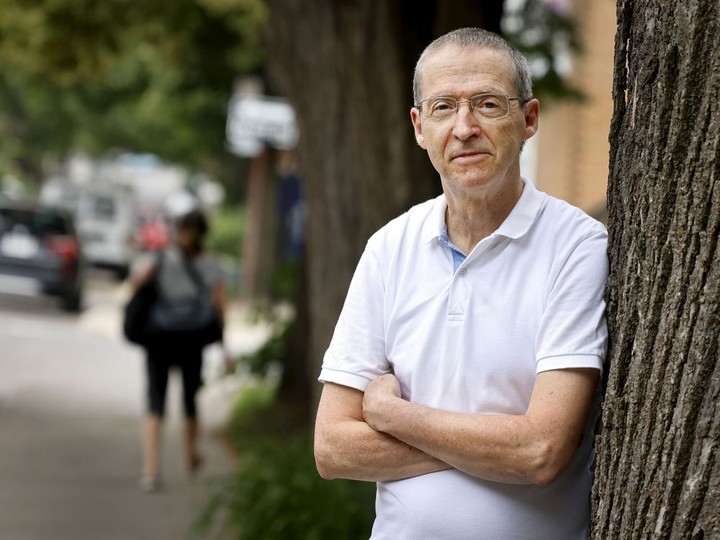
advertisement
it already appears that the relative quiet has made human ears more sensitive to environmental sounds given that complaints about certain types of noise pollution have actually soared in the past year.south shore resident marie-pierre brunelle said she’s noticing no greater volume of air traffic out of st-hubert, the borough of longueuil where montréal-st-hubert airport is located, compared to before the pandemic. yet the citizens’ group she belongs to, comité anti-pollution des avions — longueuil (capa-l), has fielded more calls from residents complaining about excessive plane noise, she said.“i think we’ve had more citizens come forth since the beginning of the pandemic that are reaching out to the committee, saying ‘what the hell is happening with this noise?’” she said. “but it hasn’t changed that much.”a few factors might explain the rise in complaints, she added. for example, many people began working from home, or were out of work, due to the pandemic. so they weren’t used to the daytime sounds around their home, brunelle said. and since normally busy roads are still relatively quiet, it might amplify the sounds from the air, she said.st-hubert airport isn’t seeing greater activity during the pandemic,jane foyle, the airport’s general manager, said. that’s confirmed by statcan‘s aircraft movement statistics for the airport. she added that it’s possible more planes are taking off for downtown with sightseers onboard this year than with student pilots flying over farms, but she couldn’t say off-hand since they’re the same planes. “the skies have been silent for a year and a half,” she said, so now “people are maybe noticing aircraft.”still, as a resident of montreal, foyle said she too has noticed more helicopters flying over the southwestern part of the island lately.

advertisement
pre-pandemic noise levels across the island were unacceptable, exceeded international guidelines and presented a potential health risk to montrealers, kaiser says.“two-thirds of people on the island of montreal are living in environments where outdoor noise is sufficiently high that it can have long-term impacts on their health,” he said. “that’s very, very significant.”road, rail and air traffic are among the principal factors accounting for high levels of outdoor noise in montreal, kaiser said.noise, he added, “is really an underestimated environmental health issue that we know we could do better on.”according to the world health organization, environmental noise negatively affects health through annoyance and sleep disturbance. the effects can lead to anxiety, depression and cardiovascular illnesses, such as hypertension, strokes and heart attacks.“that’s a really good reason to be concerned about noise,” kaiser said.
montreal public health has been recommending for a decade that montreal establish a noise monitoring system, or noise observatory, he said. “if we compare it to air pollution, we have a very good air quality monitoring system. but there’s nothing comparable for noise.”
cities in europe are required by the european union to systematically monitor noise data and have noise action plans, kaiser said. in canada, “there’s no overarching noise control at the federal or provincial or municipal level. it’s still something we feel is a necessity in montreal.”
in the absence of a noise oversight body, it’s up to citizens to become “squeaky wheels” to get the volume turned down.
the courts became a front in the citizen war against airplane noise in quebec more than a decade ago.
and now in côte st-luc, citizens are taking steps to file a complaint with the canadian transportation agency about noise from canadian pacific railway’s st. luc yard.
“since november, the noise got tremendously bad,” said charles guérin, who has lived on merrimac rd., near an entrance to the rail yard, for seven years. he and his neighbours, who are used to a certain level of noise, are now being woken up by train idling and activity in the yard between 2:30 a.m. and 5:30 a.m., he said.
“we know when there are trains there. the whole house shakes.”
cp opened a new 118,000-square-foot multi-commodity transloading facility with 11 truck loading docks inside the yard in october.
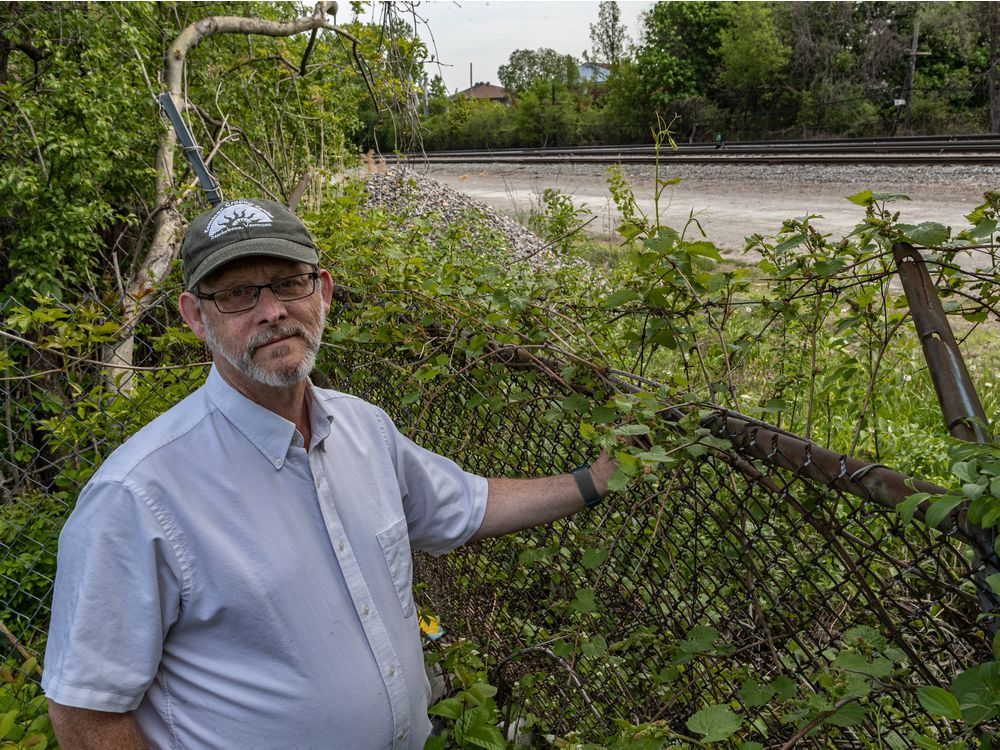
residents find the complaint process long, however. the federal transportation agency, which is a quasi-judicial tribunal dealing with complaints about railway noise and vibration, won’t conduct an investigation or a hearing until the parties exhaust all steps for what it calls “collaborative complaint resolution.”
guérin said residents so far haven’t been able to talk directly with cp. the company communicated only with municipal officials in côte st-luc.
the official word from cp is that the company has not made changes to operations that would account for an increase in noise levels around the st. luc yard.
the number and length of trains that pass on cp’s network is “strictly a function of the amount of traffic that customers tender for movement, and therefore fluctuates with the economy,” stacy patenaude, cp’s manager for government affairs and communication, said in an email, adding that the st. luc yard must operate 24 hours a day. she said the company wouldn’t comment further when asked whether the new facility has increased activity in the yard.
the company’s promotional video for the new facility in the st. luc yard says it was intended to grow traffic.
as well, cp reported that it had broken multiple carload, revenue and tonnage records in its first quarter operating results for 2021.
therein lies the paradox of environmental noise: the more there is, the better it seems to be for the economy. and many will argue what’s good for business is good for society, even if some neighbourhoods must absorb the sounds of trucks rumbling across pavement, workers banging at construction sites, airplanes tearing through the sky and trains emitting a bone-rattling screech as they come to a halt.
but the flip side to that is the economic cost of noise pollution. and there is a cost, asserts the who and quebec public health.
in a 2015 report on environmental sound, quebec’s institut national de santé publique said a conservative estimate pegged the cost of noise pollution to the province at $680 million in 2013 alone. one well-documented economic consequence is lower property values on homes affected by transportation noise, it said. there’s also the financial cost tied to the negative health consequences of excess noise.
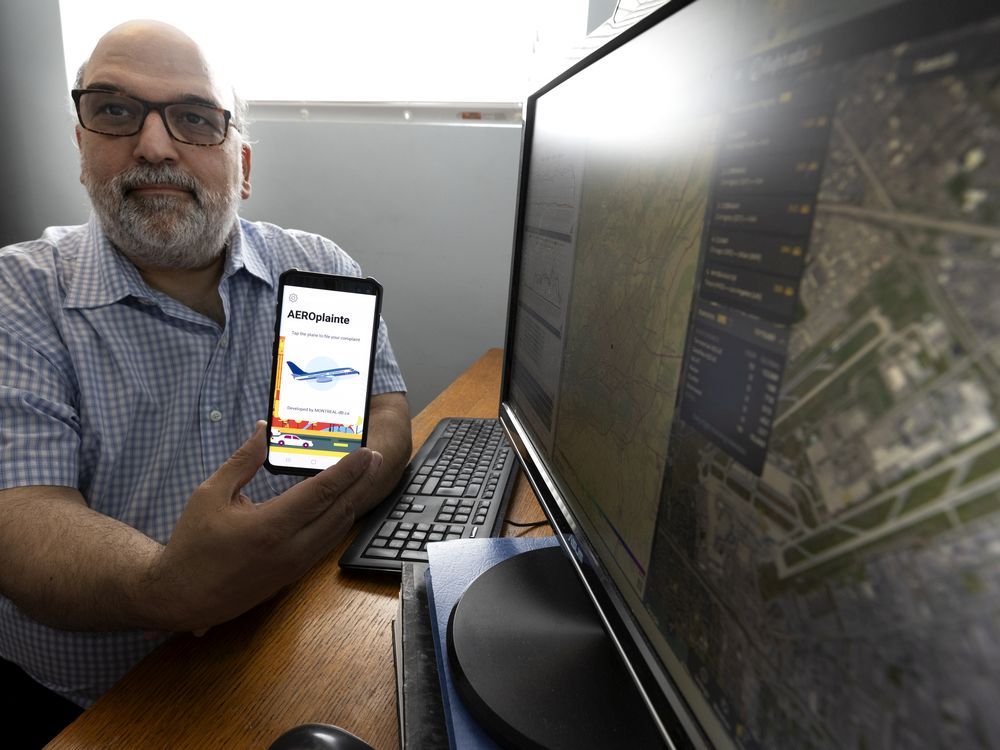
the city of montreal doesn’t have data on the number of people upset about transportation noise because it doesn’t track the type or location when it receives complaints, city spokesperson karla duval said in an email. in fact, the city’s website tells residents to contact adm or the railway companies about air or rail transport noise. mayor valérie plante’s office referred questions to the city’s communications office.
most people don’t know where to complain, or they’re too exasperated to wait on hold, said bill mavridis, an entrepreneur who created a mobile app in 2018 to make it easier to complain instantly about aircraft noise under trudeau airport flight paths.
when he moved to ahuntsic-cartierville borough in 2004, about 250 planes a day were flying overhead, he said. it soon became 600 a day.
mavridis said he created the aeroplainte app after adm reported receiving just 543 noise complaints in 2017. other major airports in canada were reporting thousands of noise complaints per year.
“i said there’s no way there’s no problem,” he said. “so i said how are we going to track data better? let’s give people a tool to file a complaint.”
in 2019, adm suddenly reported 48,273 complaints — two-thirds of them, it said, were transmitted through aeroplainte.
“they didn’t skyrocket,” mavridis said of the number. “they were finally representative.”
adm, which modernized its complaint management system in 2019, explained that its old system used to register multiple complaints from one person per day as one complaint.
even in the quiet of the pandemic, more people have downloaded his app, mavridis said. “i was surprised, but i figured it was because people were working from home.”
the argument of “why did you move next to the airport?” doesn’t hold, he added. the boroughs of rosemont—la petite-patrie and villeray—st-michel—parc-extension and the duvernay district of laval — all 10 to 15 kilometres from the airport — were among the top generators of complaints before the pandemic, mavridis said. none of adm’s seven fixed sound measuring stations are in ahuntsic, parc-extension or rosemont, even though they’re under flight paths, he noted. adm has one mobile station.
now, mavridis is building a citizen-based noise observatory with 40 airplane noise sensors, known as a noisys, from california tech company getnoisy. mavridis said he acquired a dozen of the noisys specifically for ahuntsic, with funding from the borough.
the airports contend they’re working on noise abatement.
“soundscape management is, and always has been, a priority for adm,” anne-sophie hamel, adm’s director of corporate affairs and media relations, said in an email. the airport authority “continues to put in sustained efforts to ensure a balance between air operations and cohabitation with the community.” in 2020, for example, adm held an online consultation on its updated soundscape management action plan.
even if the number of passengers was rising sharply before the pandemic, hamel said, the number of takeoffs and landings at trudeau airport remained relatively stable. planes are bigger and can carry more travellers, she said. as well, technological developments have led each new generation of aircraft to be less noisy than the previous one, hamel said.
st-hubert airport’s foyle said the airport has restricted times in the summer when its tenant flight schools can do “touch-and-gos” — touchdowns and immediate takeoffs, which generate a constant buzzing sound, she said. as well, tenants must install a muffler system on their fleets to cut noise, foyle said.
but mavridis said the noise problem starts at the federal level, where regulations are weak or non-existent.
for example, the federal government requires every airport to have a soundscape committee, with industry representatives, transport canada, elected officials and citizens. mavridis calls it “the lamest thing out there, but it meets the minimum requirements of the federal government.”
he also pointed out that a helicopter flying at 1,500 or 2,000 feet “is a very loud animal.”
but “there’s no law in canada that says you can’t make more than x level of noise over the city,” mavridis said.
under canadian aviation regulations, an airplane can fly no lower than 1,000 feet above the highest obstacle within a horizontal distance of 2,000 feet. a helicopter can fly no lower than 1,000 feet above the highest obstacle that’s 500 feet away. no regulation limits the number of aircraft on a route within a time period.
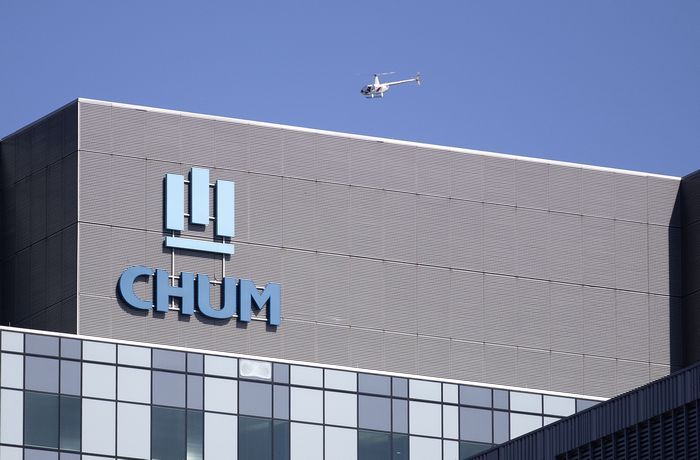
thierry dugrippe, general manager of collège air richelieu, a large flight school at st-hubert airport, says it would be nonsense to call the 10 daily sightseeing tours his company is flying over the island a nuisance for a city like montreal.
“it’s not 10 per hour,” he said. “we’re talking 10 by day.” it was three to five tours a day before the pandemic, he said. “yes, there’s an increase, but (not) a tidal wave.”
dugrippe recalled that complaints about airplane noise around st-hubert airport rose years ago even though the airport’s traffic had dropped since the 1980s. the population had aged and more people were staying at home, he said.
the pandemic is creating a similar effect, dugrippe said.
“what will happen is really simple,” he said. “when things return to normal with large planes, people will forget the small planes.”
they might not forget for long, however.
dugrippe said the industry anticipates a shortage of pilots in the next two years — so he’s expecting an “explosion” of registrations at flight schools.
st-hubert airport, meanwhile, has plans to develop commercial activity and attract low-cost and sun destination passenger flights from plattsburgh international airport’s market, foyle said.
and adm has plans, albeit on hold due to the pandemic, to build a new terminal to add capacity at trudeau airport.
back in westmount, mazza said he’s frustrated enough with the constant buzzing of flying lawn mowers that he’s considering moving away from montreal.
“i’m happy their business has doubled, but why make other people suffer?” he asked, referring to the helicopter company flying sightseers over the island.
“everybody should be happy and a winner. i don’t believe that one sector should be winning and because they’re winning, other people have to pay for it.”
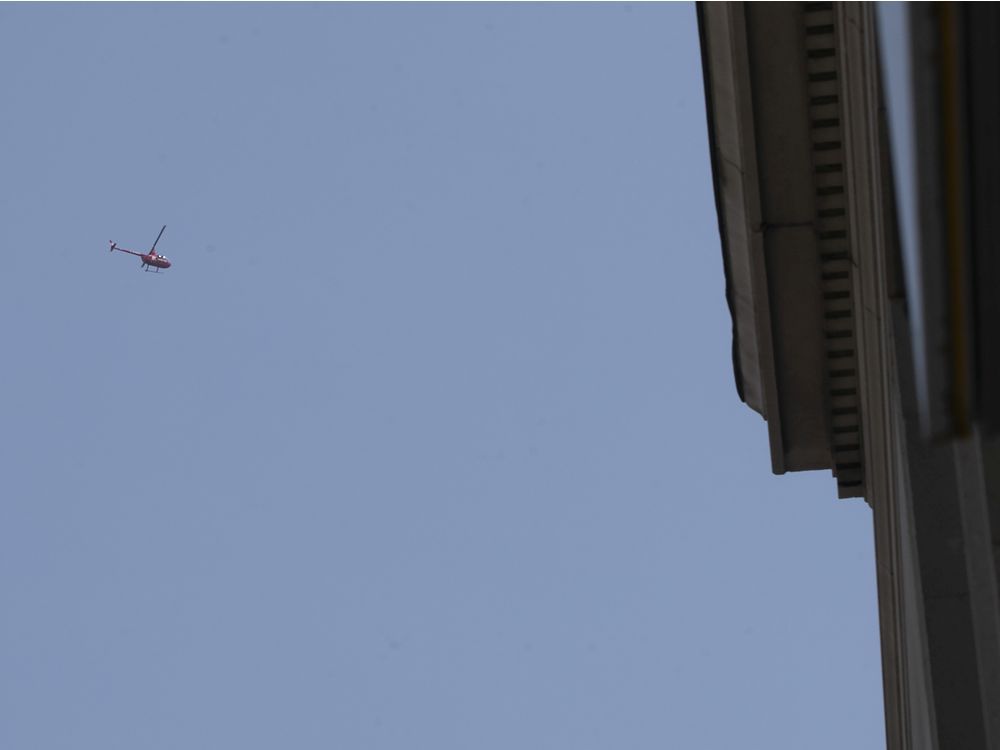
nearly 2 out of 3 montrealers affected by high noise levels
nearly two-thirds of montrealers live in neighbourhoods where outdoor noise levels exceed world health organization guidelines and are loud enough to have long-term impacts on their health, says david kaiser, a physician responsible for environmental health for montreal public health.
“one of the concerning things about long-term exposure to noise is your body doesn’t get habituated,” kaiser said. “you can be in a noisy environment for 25 years, and your body doesn’t react less.”
montreal public health has been preoccupied by the health impact of environmental noise for 15 years, he said, adding that it was sparked by complaints about plane noise around trudeau airport.
according to the world health organization, environmental noise has negative effects on health, including annoyance, sleep disturbance and cardiovascular illnesses, notably hypertension, strokes and heart attacks. annoyance caused by environmental noise can lead to symptoms of anxiety and depression and reduce quality of life and well-being, it says.
sound levels, or intensities, are measured in decibels. experts use a-weighted decibels, or dbas, when describing sound level recommendations.
according to who guidelines, noise outside homes should not exceed an average of 55 dbas during the day, and 40 dbas at night. but given the difficulty of staying within the latter limit in an urban environment, the who recommends 55 dbas as the upper limit at night.
however, research by montreal public health, quebec’s institut national de santé publique and university researchers found that more than 60 per cent of the island’s population is exposed to higher than 55 dbas — even at night.
as well, one in five montreal adults reported sleep disturbances caused by environmental noise.
there’s a socioeconomic dimension to montreal’s outdoor noise problem, kaiser said: poorer neighbourhoods are more exposed to unhealthy levels of noise.
it’s “the same pattern we see for other environmental exposures,” he said. “that is, people in lower-income neighbourhoods are more exposed to noise, especially traffic noise. the most vulnerable are the most exposed.”
 14 minute read
14 minute read

















